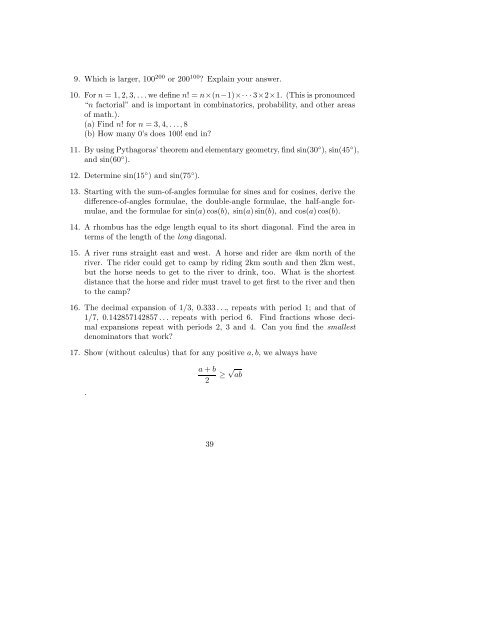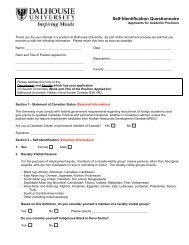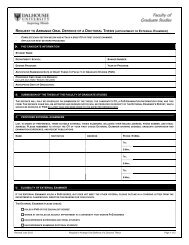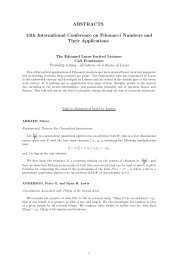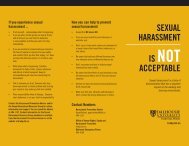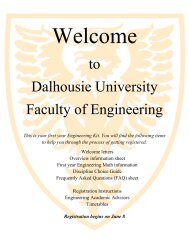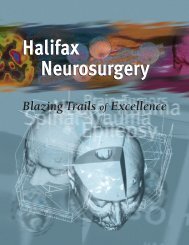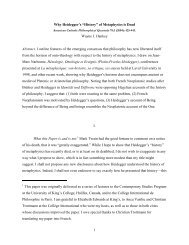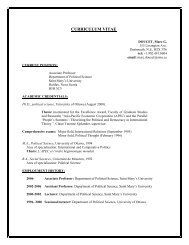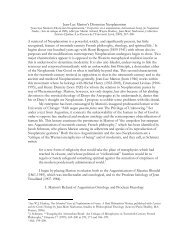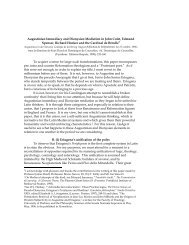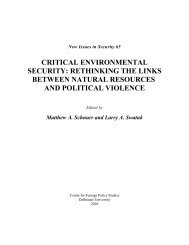Preparing for University Calculus - Math and Computer Science
Preparing for University Calculus - Math and Computer Science
Preparing for University Calculus - Math and Computer Science
Create successful ePaper yourself
Turn your PDF publications into a flip-book with our unique Google optimized e-Paper software.
9. Which is larger, 100 200 or 200 100 ? Explain your answer.10. For n =1, 2, 3,...we define n! =n×(n−1)×···3×2×1. (This is pronounced“n factorial” <strong>and</strong> is important in combinatorics, probability, <strong>and</strong> other areasof math.).(a) Find n! <strong>for</strong> n =3, 4,...,8(b) How many 0’s does 100! end in?11. By using Pythagoras’ theorem <strong>and</strong> elementary geometry, find sin(30 ◦ ), sin(45 ◦ ),<strong>and</strong> sin(60 ◦ ).12. Determine sin(15 ◦ ) <strong>and</strong> sin(75 ◦ ).13. Starting with the sum-of-angles <strong>for</strong>mulae <strong>for</strong> sines <strong>and</strong> <strong>for</strong> cosines, derive thedifference-of-angles <strong>for</strong>mulae, the double-angle <strong>for</strong>mulae, the half-angle <strong>for</strong>mulae,<strong>and</strong> the <strong>for</strong>mulae <strong>for</strong> sin(a) cos(b), sin(a) sin(b), <strong>and</strong> cos(a) cos(b).14. A rhombus has the edge length equal to its short diagonal. Find the area interms of the length of the long diagonal.15. A river runs straight east <strong>and</strong> west. A horse <strong>and</strong> rider are 4km north of theriver. The rider could get to camp by riding 2km south <strong>and</strong> then 2km west,but the horse needs to get to the river to drink, too. What is the shortestdistance that the horse <strong>and</strong> rider must travel to get first to the river <strong>and</strong> thento the camp?16. The decimal expansion of 1/3, 0.333 ..., repeats with period 1; <strong>and</strong> that of1/7, 0.142857142857 ... repeats with period 6. Find fractions whose decimalexpansions repeat with periods 2, 3 <strong>and</strong> 4. Can you find the smallestdenominators that work?17. Show (without calculus) that <strong>for</strong> any positive a, b, we always have.a + b2≥ √ ab39


